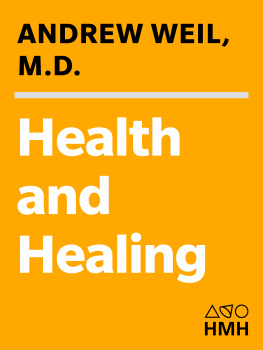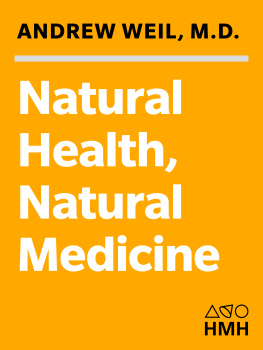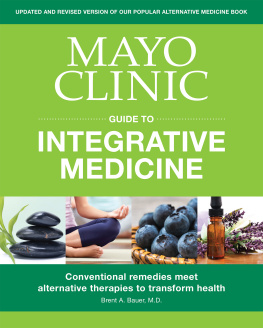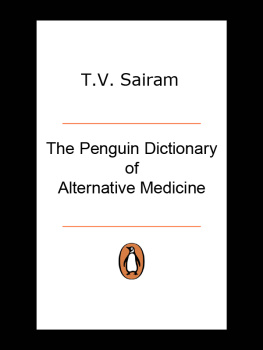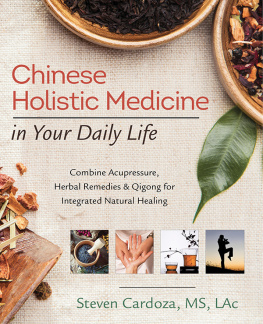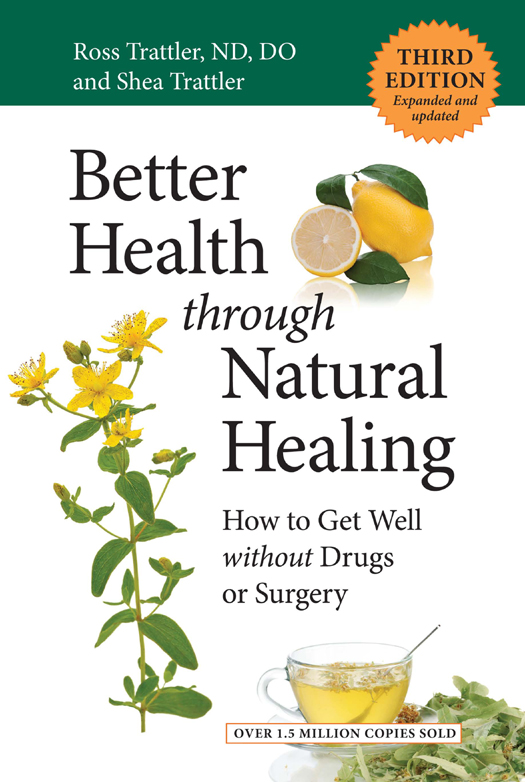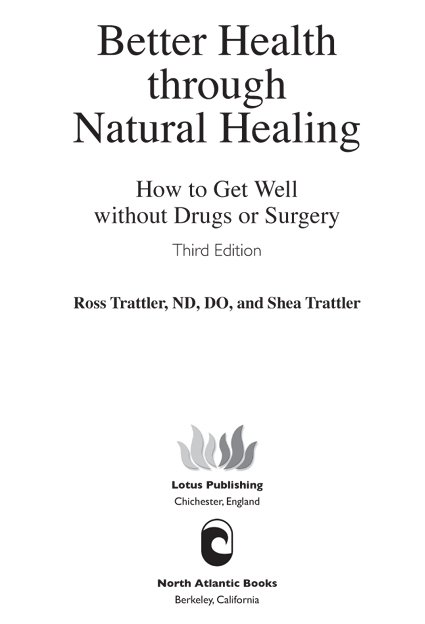Electronic Edition: ISBN 978-1-58394-668-8
Copyright 1986, 2001 by Ross Trattler. Copyright 2013 by Ross Trattler and Shea Trattler. All rights reserved. No portion of this book, except for brief reviews, may be reproduced, stored in a retrieval system, or transmitted in any form or by any meanselectronic, mechanical, photocopying, recording, or otherwisewithout the written permission of the publisher. For information, contact Lotus Publishing or North Atlantic Books.
First published in 1986 by McGraw-Hill and Thorsons. Second edition published in 2001 by Hinkler.
This revised third edition published in 2013 by
Lotus Publishing
Apple Tree Cottage, Inlands Road, Nutbourne, Chichester, PO18 8RJ, and
North Atlantic Books
PO Box 12327
Berkeley, California 94712
Drawings Emily Evans
Text Design Wendy Craig
Cover Design Paula Morrison
MEDICAL DISCLAIMER: The following information is intended for general information purposes only. Individuals should always see their health care provider before administering any suggestions made in this book. Any application of the material set forth in the following pages is at the readers discretion and is his or her sole responsibility.
Better Health through Natural Healing: How to Get Well without Drugs or Surgery is sponsored by the Society for the Study of Native Arts and Sciences, a nonprofit educational corporation whose goals are to develop an educational and cross-cultural perspective linking various scientific, social, and artistic fields; to nurture a holistic view of arts, sciences, humanities, and healing; and to publish and distribute literature on the relationship of mind, body, and nature.
British Library Cataloguing-in-Publication Data
A CIP record for this book is available from the British Library
ISBN 978-1-905367-43-6 (Lotus Publishing)
ISBN 978-1-58394-667-1 (North Atlantic Books)
The Library of Congress has Cataloged the printed edition as follows:
Trattler, Ross.
Better health through natural healing : how to get well without drugs or surgery.Third edition / Ross Trattler, ND, DO, and Shea Trattler.
pages cm.
Summary: An essential reference book for alternative health practitioners as well as for anyone seeking to heal common ailments and diseases effectively with natural treatmentsProvided by publisher.
ISBN 978-1-905367-43-6 (Lotus Publishing)ISBN 978-1-58394-667-1 (North Atlantic Books)
1. NaturopathyHandbooks, manuals, etc. 2. Therapeutics, PhysiologicalHandbooks, manuals, etc. I. Trattler, Shea. II. Title.
RZ440.T73 2013
615.535dc23
2012050157
v3.1
Contents
Chapter 1
Introduction
This book was written out of true need. As the years passed in my practice, I found that my memory was far from perfect. Treatments I once knew well and had used successfully would sometimes evade me at the moment they were needed most. In a busy practice, with patient following patient, a doctor is called upon to discern the essence of a problem and its cure with little time for pondering. Late in the afternoon and worn out by a hectic day, I often found myself unable to remember quickly a useful prescription or other aspect of therapy, or which book it was in. At that time I used hundreds of reference books regularly. There was no naturopathic equivalent to The Merck Manual, where one could quickly look up essential details of a particular illness.
It has been over thirty years since I put pen to paper for the first edition. Now, as I sit at my computer, I wonder how such a reference book could have been written without the resources we have today. Information on and about naturopathy and naturopathic treatment is much more available, especially with the use of the internet. You can research a particular therapy, supplement, herb, or any health topic you could think of online. You can also use the internet to locate a qualified naturopath practicing near you. Even with these new and accessible resources, however, it is often most useful to have a major text to refer to when the need arises. It is for this reason that I have decided to release a completely revised third edition of Better Health through Natural Healing. I have revised and updated each chapter to include changes both in our approach to the treatment of a particular disorder and to incorporate changes made possible through the immense amount of nutritional research that has been done over the last twenty years pertaining to natural therapies. You will find many new chapters that were not in the first or second edition. Some I have written, but my son, Shea Trattler, added many. Shea is my personal osteopath, and I am proud to say that he is one of the best osteopaths I have ever known. He has added all of the new chapters specifically relating to osteopathy, and their inclusion adds greatly to the usefulness of this book.
This book has been written with both the lay public and practitioners in mind. This is not always an easy marriage, and some sections may get a bit technical for nonprofessionals. It isnt a simple task to write a comprehensive text on naturopathic medicine, or even on one approach to this field. In reality, naturopathic medicinethe science and art of natural therapeuticscan never be written down completely. Each naturopath lives and breathes his or her own philosophy, and therapies differ widely. Mine is no more correct than others, but it works well for me in my practice. It is my hope to make these methods easier to understand and more accessible.
Chapter 2
How to Use This Book
Naturopathic medicine is not a subject that easily lends itself to definition. After all is said and done, naturopathy is a way of life. When practicing as a naturopathic physician, one is forced to dissect a philosophical conviction in the healing power of nature, breaking it down into methods and practices that can easily be understood. Too often the result of this dissection is that the listener begins to feel that naturopathy is diet or fasting or spinal manipulation or botanical medicine or another of its various parts. These are merely the tools a naturopath uses to help the healing power within in its attempt to seek equilibrium.
As you read through each chapter, always bear in mind that diseaseas an entitydoes not exist. People are at dis-ease, each for his or her own unique set of causes. The role of the naturopath, whatever tools he or she may use, is to educate the patient and, when necessary, help direct and release the inner healing power of nature.
contains the practical application of the philosophy and these therapeutic tools as they relate to the most common diseases. I have tried to make each chapter in part 2 as practical as possible for home use. Nothing, however, can replace the expertise and knowledge of an experienced and properly trained physician. Most chapters begin with a brief definition and description of signs and symptoms of a particular disease, followed by a list of factors possibly related to the cause. Here you will find most of the causes recognized by orthodox medicine, but also, and more importantly, factors as seen from a naturopathic perspective. In reviewing this list, consider how much each one may be a factor in your particular case. Obviously not all or even most of these contributing factors will be part of the cause in each individual case. They are included to act as mental triggers or signposts to help each person (or practitioner) recognize the obviousand sometimes the more obscureconditions that set the stage for disease to be created. It is vitally important to recognize our role in disease creation, so that we can learn how to undertake the responsibility for its cure. Following that list of causes is a general discussion examining etiology, or causative factors, in more depth. This should leave the reader with a clear understanding of what may cause the particular disorder.



